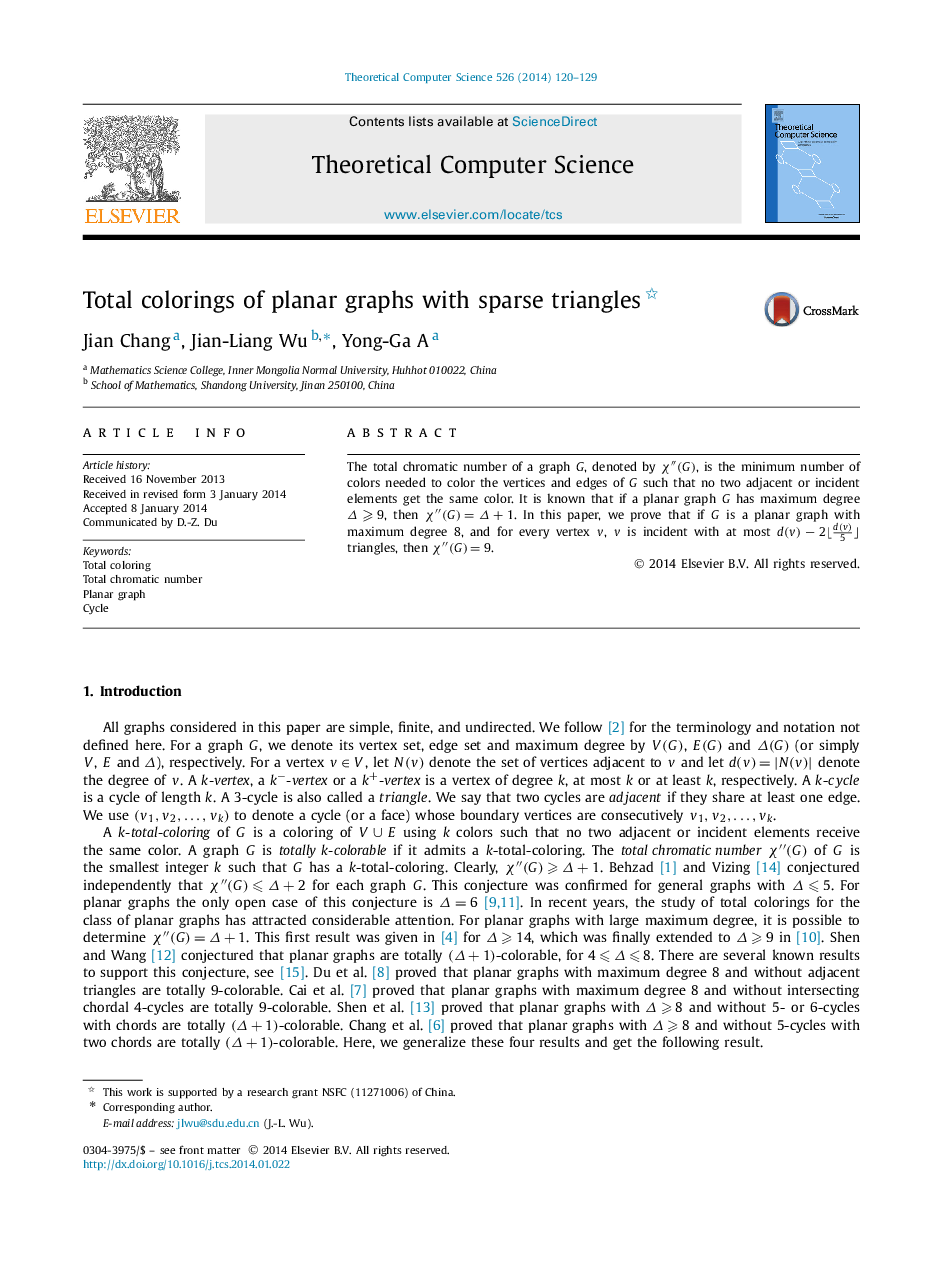| Article ID | Journal | Published Year | Pages | File Type |
|---|---|---|---|---|
| 434435 | Theoretical Computer Science | 2014 | 10 Pages |
Abstract
The total chromatic number of a graph G , denoted by χ″(G)χ″(G), is the minimum number of colors needed to color the vertices and edges of G such that no two adjacent or incident elements get the same color. It is known that if a planar graph G has maximum degree Δ⩾9Δ⩾9, then χ″(G)=Δ+1χ″(G)=Δ+1. In this paper, we prove that if G is a planar graph with maximum degree 8, and for every vertex v, v is incident with at most d(v)−2⌊d(v)5⌋ triangles, then χ″(G)=9χ″(G)=9.
Related Topics
Physical Sciences and Engineering
Computer Science
Computational Theory and Mathematics
Authors
Jian Chang, Jian-Liang Wu, Yong-Ga A,
